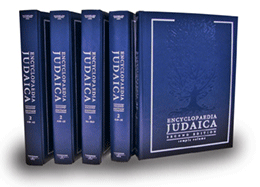The only passage in the Torah in which ink is mentioned is Jer. xxxvi. 18. It would evidently, however, be a mistake to conclude that it was unknown in earlier times, for in this passage "deyo" is spoken of as something well known. Perhaps the Hebrew word "katab" presupposes the existence of ink; and ink was certainly known to the ancient Egyptians. It has not been determined how ink was prepared by the ancient Jews; at any rate the Talmudic "deyo" designates no fluid ink, but rather a cake of pigment which had to be made liquid before use. This ink was made chiefly from soot. Oil or balsam-gum was used to change the soot into a tough, pitchy substance (Shab. 23a); and that made with olive-oil was preferred, as it gave the finest pigment.
Gallnuts, first mentioned by Marcianus Capella, are unknown to the Mishnah, but are mentioned in the Gemara. A mineral ink was "kalkantus" (χαλ κανθός), which was also used occasionally in Palestineunmixed. As the ancient world had mixed copper sulphate with the ink of gallnuts, R. Meïr (after 100 C. E.), a descendant of Greek proselytes, did the same with deyo, the national ink of the Jews. His object was evidently to make the writing more permanent, since ink with a mineral mixture has the advantage of penetrating the material written upon, although it also gradually destroys it. The writing was probably done with an "'et," which designates not only a metal style, but also a reed pen which corresponds to the Arabic "kalam" of to-day. As is still common in the Orient, the scribe used to carry the 'et or stylus together with the "keset hasofer," or inkhorn, in his girdle (Ezek. ix. 2-11). He carried also a particular kind of penknife ("ta'ar hasofer") wherewith to sharpen his reed pen and to cut the writing-material (Jer. xxxvi. 23).
Aharon's Jewish Books and Judaica
600 South Holly Street Suite 103
Denver, Colorado 80246
303-322-7345

No comments:
Post a Comment